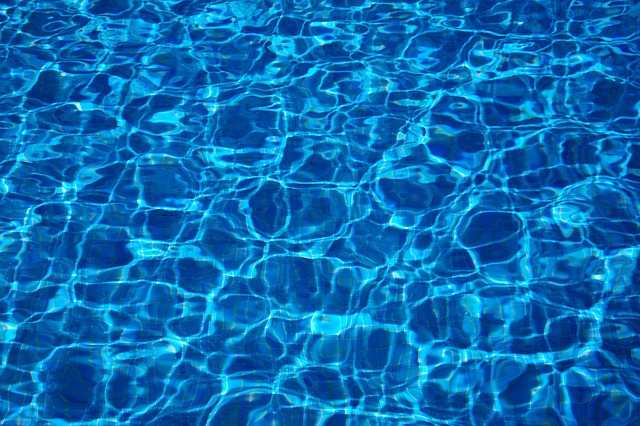Proper pool maintenance is crucial for ensuring a clean and healthy swimming environment. One essential aspect of pool maintenance is backwashing, which involves reversing the flow of water through the filter to remove accumulated debris and contaminants. But how often should you backwash your pool to maintain optimal filtration and water quality? In this article, we will delve into the frequency of backwashing your pool, considering various factors that can influence this process. The frequency of backwashing primarily depends on the pool’s usage, size, and the amount of debris it accumulates. As a general rule of thumb, pool owners should backwash their filters when the pressure gauge on the filtration system reaches a pressure increase of around 8-10 pounds per square inch (psi) above the normal operating pressure.
This pressure increase indicates that the filter is becoming clogged and restricting water flow, diminishing its efficiency. However, it is important to note that the optimal pressure range may vary depending on the type of filter you have installed. Different filters, such as sand, cartridge, or diatomaceous earth (DE) filters, have distinct pressure ranges for effective operation. Therefore, referring to the manufacturer’s guidelines specific to your filter type is imperative for accurate pressure measurements and backwashing intervals. Apart from pressure increase, other factors influencing the backwashing frequency include environmental conditions, pool usage, and the presence of excessive debris. If your pool is located in an area prone to high winds, heavy vegetation, or a construction site nearby, it may accumulate debris more rapidly. Similarly, if you frequently host pool parties or have an increased number of swimmers, the pool will experience higher debris and particulate load, necessitating more frequent backwashing.
To optimize pool filtration and maintain water clarity, regular visual inspections are vital. Monitoring the clarity of the water and the presence of visible debris can help determine when backwashing is required, even if the pressure gauge hasn’t reached the recommended threshold. If you notice cloudy water, reduced water flow, or the inability to maintain appropriate chemical balance despite proper chemical treatment, it may indicate the need for immediate backwashing. Additionally, it’s crucial to keep an eye on the pool’s suction performance. A decrease in suction power or a lack of pressure at the return jets can signify a clogged or dirty filter, prompting the need for backwashing. Regularly checking the skimmer and pump baskets for debris accumulation is also essential, as excessive debris can bypass the filter and potentially damage the pump or other pool equipment.
While adhering to a regular backwashing schedule is important, it’s equally vital not to overdo it. Excessive backwashing can lead to unnecessary water and chemical wastage, as well as increased wear and tear on the filter system. It is advisable to strike a balance between maintaining optimal filtration and conserving resources. In conclusion, the frequency of backwashing your pool depends on various factors such as pool usage, size, environmental conditions, and the type of filter installed. Monitoring the pressure gauge, visually inspecting the water clarity and debris accumulation, and paying attention to suction performance are key in determining when to backwash. By following manufacturer guidelines and practicing regular pool maintenance, you can ensure an efficiently functioning filtration system and enjoy a clean and inviting swimming pool throughout the swimming season.
How frequently should you backwash a swimming pool?
Regular maintenance of a swimming pool is crucial to ensure optimal water quality and system performance. One essential aspect of pool maintenance is backwashing, a process that removes accumulated debris and contaminants from the pool’s filtration system. Proper backwashing helps maintain water clarity and enhances the efficiency of the pool’s circulation system. In this article, we will explore the recommended frequency for backwashing a swimming pool, taking into consideration various factors that can influence the cleaning requirements. The frequency of backwashing a swimming pool depends on several factors, including the pool’s size, usage, environmental conditions, and the type of filtration system in place.
Generally, it is advised to backwash a pool when the pressure gauge on the filtration system indicates a pressure rise of 8 to 10 pounds per square inch (psi) above the system’s clean pressure. This increase in pressure is an indicator that the filter media has become saturated with debris and needs to be cleaned. However, it is important to note that relying solely on pressure readings may not always be sufficient to determine the ideal backwashing frequency. Factors such as the type of debris, bather load, and environmental conditions can influence the accumulation of contaminants in the pool. For instance, if the pool is located in an area with high pollen or dust levels, or if it experiences heavy usage, the filter may require more frequent backwashing. In addition to pressure readings, pool owners should also consider the clarity of the water as an indicator of the need for backwashing. If the water appears cloudy or if there is a noticeable decrease in water flow, it may be a sign that the filter is not effectively removing impurities.
In such cases, backwashing should be performed even if the pressure gauge reading is within the normal range. The type of filtration system installed in the pool also affects the backwashing frequency. There are three common types of filters: sand filters, cartridge filters, and diatomaceous earth (DE) filters. Each type has different cleaning requirements and maintenance schedules. Sand filters are the most commonly used filters in swimming pools. They require periodic backwashing to remove trapped debris from the sand bed. Generally, sand filters should be backwashed every 1 to 2 weeks, depending on the factors mentioned earlier. Cartridge filters consist of a pleated material that captures debris as water passes through. They offer finer filtration compared to sand filters and require less frequent backwashing. Typically, cartridge filters should be cleaned every 4 to 6 weeks, or when the pressure gauge indicates a rise in pressure. Diatomaceous earth (DE) filters use a fine powder composed of fossilized remains of diatoms as the filtering medium. DE filters provide the highest level of water clarity and require backwashing when the pressure gauge shows an increase of approximately 10 psi.
Additionally, DE filters should undergo a thorough cleaning at least once a year, which involves disassembling the filter and manually removing any remaining debris. It is worth mentioning that backwashing alone may not completely eliminate all contaminants from the filtration system. Periodic filter maintenance, such as chemical cleaning or replacement of filter media, should also be considered to ensure optimal filtration efficiency. In summary, the frequency of backwashing a swimming pool depends on factors such as pool size, usage, environmental conditions, and the type of filtration system. While pressure gauge readings provide a general guideline, pool owners should also consider water clarity and flow as additional indicators for the need to backwash. Following the manufacturer’s recommendations and regularly inspecting the pool’s filtration system will help maintain crystal-clear water and ensure the longevity of the pool equipment.

Pool maintenance: What is the recommended backwashing frequency?
Pool maintenance is an essential aspect of ensuring the cleanliness and optimal functioning of swimming pools. Among the various maintenance tasks, backwashing plays a crucial role in keeping the pool water clear and free from debris. The frequency at which backwashing should be performed is a significant consideration for pool owners and operators. In this article, we will delve into the topic of pool maintenance and discuss the recommended backwashing frequency to help pool owners maintain a pristine swimming environment. Backwashing is a process that involves reversing the flow of water through the pool’s filtration system. It is primarily done to flush out accumulated dirt, debris, and other particulate matter that may have collected in the filter media.
Over time, these impurities can hinder the filtration process, leading to reduced water clarity and decreased efficiency of the pool’s circulation system. The ideal backwashing frequency for a pool depends on several factors, including the pool size, usage patterns, environmental conditions, and the type of filtration system installed. Typically, the manufacturer of the pool filter or the filtration system will provide specific guidelines regarding backwashing frequency. It is crucial to consult these recommendations to ensure optimal performance and longevity of the equipment. For most residential pools with sand filters, a general guideline suggests backwashing when the pressure gauge on the filter reaches a pressure increase of 8-10 pounds per square inch (psi) above the normal operating pressure. This pressure increase indicates that the filter media is becoming clogged with debris and needs to be cleaned. By backwashing the filter, the accumulated impurities are expelled from the system, restoring the filter’s efficiency. However, it is important to note that relying solely on pressure gauge readings may not always provide an accurate indication of when to backwash.
Factors such as the type and amount of debris in the pool, frequency of pool usage, and environmental conditions can influence the pressure increase. Therefore, it is recommended to combine pressure gauge readings with visual inspections of the pool water and regular maintenance routines to determine the optimal backwashing frequency. In addition to pressure gauge readings, pool owners should also pay attention to the clarity of the pool water. If the water appears cloudy or if there is a decrease in water flow from the return jets, it may be an indication that the filter requires immediate attention. These visual cues, coupled with pressure gauge readings, can help determine when backwashing is necessary. Furthermore, it is worth mentioning that backwashing too frequently can lead to unnecessary water waste. While maintaining a clean and debris-free pool is important, it is equally crucial to consider water conservation. Therefore, it is advisable to strike a balance between maintaining optimal filtration efficiency and minimizing water consumption. In summary, pool maintenance, including regular backwashing, is vital for preserving water clarity and ensuring the efficient operation of swimming pools.
The recommended frequency for backwashing depends on factors such as pool size, usage patterns, environmental conditions, and filtration system type. By closely monitoring the pressure gauge readings, conducting visual inspections, and considering the specific guidelines provided by the filter manufacturer, pool owners can determine the appropriate backwashing frequency for their pool. Striking the right balance between filter efficiency and water conservation will help maintain a clean and inviting swimming environment for all pool enthusiasts.

Understanding the importance of backwashing your pool filter
A well-maintained pool is a joy to swim in, providing a refreshing escape from the summer heat. To ensure your pool water remains clean and clear, it is essential to understand the importance of backwashing your pool filter. This process plays a crucial role in maintaining the efficiency and longevity of your pool’s filtration system. Pool filters are designed to remove dirt, debris, and other contaminants from the water, keeping it safe and inviting. Over time, as the filter does its job, the accumulation of particles and impurities starts to clog the filter media. This build-up restricts the flow of water and reduces the filter’s effectiveness. This is where backwashing comes into play. Backwashing is the process of reversing the flow of water through the filter, dislodging and flushing out the trapped debris. It is typically performed on sand and DE (diatomaceous earth) filters, as these filters require periodic cleaning to maintain their efficiency.
Cartridge filters, on the other hand, do not require backwashing as they are simply removed and cleaned manually. The backwashing process starts by turning off the pool pump to stop the water flow. Next, the multiport valve on the filter is set to the “backwash” position, redirecting the water flow in the opposite direction. As the water flows backward through the filter, it agitates the filter media, dislodging trapped debris and forcing it out through the waste line. During backwashing, it is essential to keep an eye on the sight glass or pressure gauge on the filter system. These indicators provide valuable information about the level of contamination in the filter and help determine when the backwashing process is complete. Once the water in the sight glass runs clear or the pressure gauge returns to its normal range, it signifies that the filter is clean, and the backwashing can be stopped. Regular backwashing is vital for maintaining the efficiency of your pool filter and ensuring optimal water circulation.
When the filter is clean, water can flow freely through the system, maximizing filtration and circulation. This results in improved water clarity, reduced chemical consumption, and enhanced overall pool performance. The frequency of backwashing depends on various factors, including the size of the pool, the filter type, and the level of pool usage. As a general guideline, pool owners should backwash their filters when the pressure gauge reads 8-10 psi above the normal operating pressure. However, it is important to note that each pool is unique, and the frequency may vary. It is recommended to consult the manufacturer’s guidelines or seek advice from a pool professional to determine the optimal backwashing schedule for your specific pool. In conclusion, understanding the importance of backwashing your pool filter is crucial for maintaining a clean and healthy swimming environment.
By regularly performing this essential maintenance task, you can ensure that your pool’s filtration system operates at its best, providing you with crystal-clear water and a delightful swimming experience. So, make backwashing a part of your pool maintenance routine and enjoy the benefits of a well-maintained pool all season long. Disclaimer: The information provided in this article is for general informational purposes only and does not constitute professional advice. For specific guidance regarding pool maintenance and backwashing, please consult with a qualified pool professional.

Signs that indicate it’s time to backwash your pool
A swimming pool is a refreshing oasis during the hot summer months, providing a cool and relaxing retreat. However, to ensure its optimal performance and crystal-clear water, regular maintenance is crucial. One essential maintenance task for any pool owner is backwashing the pool’s filtration system. Backwashing is the process of reversing the flow of water through the filter to flush out accumulated debris and contaminants. While it is important to know how often you should backwash your pool, it is equally crucial to recognize the signs that indicate when it’s time to perform this essential maintenance task.
- Increased Pressure: One of the primary signs that your pool requires backwashing is an increase in pressure on the pressure gauge of your filter system. As debris, dirt, and other contaminants accumulate in the filter media, it restricts water flow, resulting in higher pressure within the system. If you notice a significant rise in pressure, it’s a clear indication that backwashing is necessary.
- Cloudy Water: If your pool water appears cloudy or hazy despite regular chemical treatments, it could be an indication that the filter is not effectively removing impurities. When the filter media becomes clogged with debris, it loses its efficiency, allowing particles to circulate and cloud the water. Backwashing helps clear out these trapped impurities, restoring water clarity.
- Reduced Water Flow: Another sign that it’s time to backwash your pool is reduced water flow through the return jets. A clogged filter restricts the flow of water, diminishing the pool’s circulation and filtration capabilities. If you notice weaker water flow or decreased jet strength, it’s likely that your pool’s filter is in need of a thorough backwashing.
- Dirty Filter Media: During regular pool maintenance, it’s essential to inspect the filter media periodically. If you notice an accumulation of debris, dirt, or other contaminants on the surface of the filter media, it’s a strong indication that backwashing is required. Dirty filter media cannot effectively trap and remove impurities, compromising the overall cleanliness of the pool water.
- Longer Filtration Cycles: Pay attention to the duration of your filtration cycles. If you notice that your pool’s filtration system is running for extended periods without achieving the desired water clarity, it suggests that the filter media is likely clogged and in need of backwashing. Proper backwashing will restore the filter’s efficiency and reduce the time required for effective filtration.
- High Turbidity in Backwash Sight Glass: Many pool filtration systems are equipped with a sight glass that allows you to monitor the water clarity during the backwashing process. If you observe high turbidity or a significant amount of dirt and debris in the sight glass, it indicates that the filter media is saturated and unable to effectively capture contaminants. This observation reinforces the need for a thorough backwashing to restore the filter’s performance.

Expert tips: Determining the optimal backwashing schedule for your pool
Maintaining a clean and healthy swimming pool is essential for an enjoyable and safe swimming experience. One of the key maintenance tasks is backwashing, a process that removes debris and contaminants from the pool filter. However, determining the optimal backwashing schedule for your pool can be a challenging task. In this guide, we will provide expert tips to help you establish an efficient and effective backwashing routine, ensuring the longevity of your pool equipment and the crystal-clear quality of your water.
- Understand Your Pool’s Filtration System:
Before establishing a backwashing schedule, it’s crucial to familiarize yourself with your pool’s filtration system. Different pools employ various types of filters, such as sand filters, cartridge filters, or diatomaceous earth (DE) filters. Each filter type has its own unique characteristics and requirements. Refer to your pool manufacturer’s guidelines or consult a pool professional to determine the specific needs of your pool’s filtration system. - Assess Pool Usage and Environmental Factors:
The frequency of backwashing largely depends on pool usage and environmental factors. Pools that experience heavy usage, such as public or commercial pools, may require more frequent backwashing due to higher levels of debris and contaminants. Additionally, consider environmental factors like nearby vegetation, construction, or windy conditions that can introduce additional debris into your pool. These factors will influence the frequency of backwashing required. - Monitor Pressure Gauges:
Pressure gauges play a vital role in determining when backwashing is necessary. Each pool filter has a recommended pressure range, typically indicated by a green and red zone on the gauge. As the filter collects debris, the pressure inside the system increases. Once the pressure reaches the upper limit of the recommended range or enters the red zone, it’s time to initiate the backwashing process. - Conduct Regular Water Testing:
Water testing is an essential practice to maintain proper water chemistry and determine the frequency of backwashing. Test your pool water regularly to assess the levels of pH, chlorine, alkalinity, and other important parameters. Imbalanced water chemistry can lead to increased filter clogging and decreased efficiency. Adjusting chemical levels as needed will help optimize your backwashing schedule. - Consider Backwash Duration:
The duration of the backwashing process depends on the size of your pool and the type of filter. As a general guideline, backwashing should continue until the water in the sight glass or discharge line appears clear. However, keep in mind that excessively long backwashing can result in water and chemical wastage. Aim for a sufficient duration that removes accumulated debris without unnecessary wastage. - Keep a Maintenance Log:
Maintaining a detailed maintenance log is an excellent practice for pool owners and operators. Record each backwashing session, including the date, time, duration, pressure readings, and any additional observations. By tracking this information, you can establish patterns and identify trends that will help refine your backwashing schedule over time. - Seek Professional Advice:
If you are unsure about establishing an optimal backwashing schedule or encounter persistent issues with water clarity or filtration, it is advisable to seek professional advice. Pool experts or maintenance professionals can assess your pool’s specific requirements, provide personalized recommendations, and address any underlying issues that may affect your backwashing routine.
Remember, the optimal backwashing schedule for your pool may require adjustments based on changing conditions. Regular observation, testing, and analysis of your pool’s performance will help you fine-tune your maintenance routine and ensure a pristine swimming environment for you and your guests. By following these expert tips, you can establish a well-optimized backwashing schedule for your pool, promoting efficient filtration, extending the lifespan of your equipment, and ultimately enhancing your swimming experience.

Efficient pool care: Finding the right balance for backwashing frequency
Efficient pool care is crucial for maintaining a clean and healthy swimming environment. One of the key aspects of pool maintenance is finding the right balance for backwashing frequency. Backwashing is the process of cleaning the pool filter by reversing the water flow to flush out accumulated debris and contaminants. While it is essential to backwash your pool regularly, determining the optimal frequency requires careful consideration of various factors. The first factor to consider is the size of your pool and its filtration system. Larger pools with high water volumes and larger filters may require more frequent backwashing compared to smaller pools. Similarly, different types of filters, such as sand, cartridge, or diatomaceous earth (DE) filters, have varying capacities and efficiency levels. Understanding the specific requirements of your pool’s filtration system will help you determine the appropriate backwashing frequency. Another important factor is the pool usage and surrounding environment.
Pools that experience heavy usage or are located in areas with a high presence of dirt, leaves, or other debris may require more frequent backwashing. Pools in regions with windy conditions or surrounded by trees often accumulate a significant amount of debris, necessitating more regular cleaning. Additionally, factors like weather conditions, nearby construction, or seasonal changes can affect the cleanliness of your pool and influence the backwashing frequency. Water quality is a crucial consideration when determining the optimal backwashing frequency. Regular monitoring of water chemistry parameters such as pH, chlorine levels, and total dissolved solids (TDS) can provide insights into the condition of your pool water. If you notice a significant decrease in water clarity, increased algae growth, or reduced filtration efficiency, it may indicate the need for more frequent backwashing. Conversely, if your water quality remains consistently good, you may be able to extend the time between backwashing cycles. Striking the right balance for backwashing frequency also involves considering water conservation and energy efficiency. While regular backwashing is necessary to maintain optimal filtration, excessive backwashing can lead to wastage of water and energy.
It is important to find a frequency that keeps your pool clean without unnecessary resource consumption. Some pool owners opt for alternative methods, such as using a filter cleaning solution or employing a backwashing schedule based on water pressure or visual inspection, to optimize their backwashing routine. To maximize the efficiency of your pool care regimen, it is recommended to keep a record of backwashing frequency and observe any patterns or trends. By tracking the results of different backwashing intervals, you can fine-tune your maintenance schedule and identify the optimal frequency for your specific pool. Remember that finding the right balance for backwashing frequency may require some experimentation and adjustments over time to achieve the best results. In conclusion, efficient pool care involves finding the optimal balance for backwashing frequency. Considering factors such as pool size, filtration system, pool usage, environmental conditions, water quality, and resource conservation will guide you in determining the appropriate backwashing frequency. By maintaining a clean and well-maintained pool, you can ensure a safe and enjoyable swimming experience for yourself and your guests while optimizing the longevity and performance of your pool’s filtration system.


Great practical knowledge! I will apply these tips in my daily life.